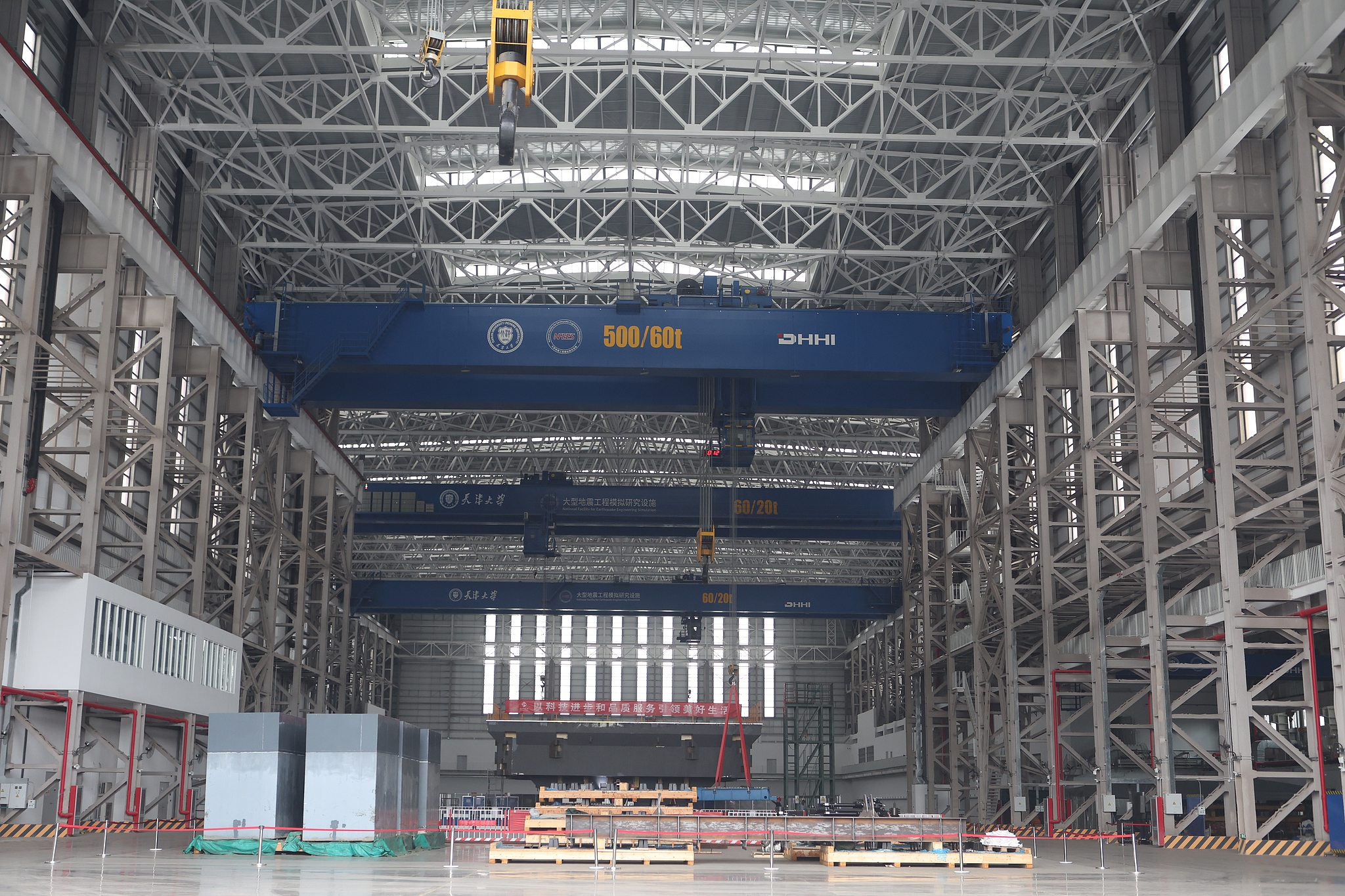
The national facility for earthquake engineering simulation in Tianjin Municipality, north China, September 10, 2023. /VCG
Zou Wenwei, director of the Science Popularization Committee of the China Society for Disaster Prevention, notes that the EEW system allows critical infrastructure, such as high-speed railways and nuclear power plants, to take preventive measures and gives the public time to react.
However, he states that EEW is most effective within 50 to 200 kilometers of the epicenter. Closer than 50 km, warnings may come too late; beyond 200 km, seismic waves are weakened. Despite its limitations, EEW remains a vital tool for disaster mitigation.
By 2021, the Beijing-Tianjin-Hebei region had made significant strides in developing its earthquake early warning system, deploying 1,653 monitoring stations spaced an average of 11 km apart, with denser coverage in key urban areas.
Three regional EEW centers in Beijing, Tianjin and Hebei can issue alerts within seconds of detection, strengthening the region's earthquake preparedness.

